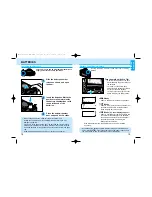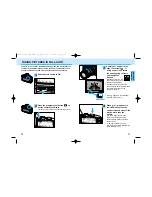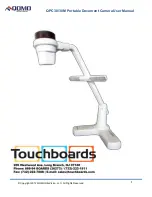
7
6
FOR PROPER AND SAFE USE
Read and understand all warnings and cautions before using this
product.
Using batteries improperly can cause them to leak harmful solutions,
overheat, or explode which may damage property or cause personal
injury. Do not ignore the following warnings.
• Only use the batteries specified in this instruction manual.
• Do not install the batteries with the polarity (+/–) reversed.
• Do not use batteries which show wear or damage.
• Do not expose batteries to fire, high temperatures, water, or
moisture.
• Do not attempt to short or disassemble batteries.
• Do not store batteries near or in metallic products.
• Do not mix batteries of different types, brands, or ages.
• Do not use leaking batteries. If fluid from the batteries enters your
eye, immediately rinse the eye with plenty of fresh water and
contact a doctor. If fluid from the batteries makes contact with your
skin or clothing, wash the area thoroughly with water.
• Tape over lithium battery contacts to avoid short-circuiting during
disposal; always follow local regulations for battery disposal.
• Do not disassemble this product. Electric shock may cause injury if
a high voltage circuit inside the product is touched. Take the product
to a Minolta Service Facility when repairs are required.
WARNING
This device complies with Part 15 of the FCC Rules. Operation is subject to the follow-
ing two conditions: (1) This device may not cause harmful interference, and (2) this
device must accept any interference received, including interference that may cause
undesired operation. Changes or modifications not approved by the party responsible
for compliance could void the user's authority to operate the equipment. This equip-
ment has been tested and found to comply with the limits for a Class B digital device,
pursuant to Part 15 of the FCC Rules. These limits are designed to provide reasonable
protection against harmful interference in a residential installation. This equipment gen-
erates, uses and can radiate radio frequency energy and, if not installed and used in
accordance with the instructions, may cause harmful interference to radio communica-
tions. However, there is no guarantee that interference will not occur in a particular
installation. If this equipment does cause harmful interference to radio or television
reception, which can be determined by turning the equipment off and on, the user is
encouraged to try to correct the interference by one or more of the following measures:
• Reorient or relocate the receiving antenna.
• Increase the separation between the equipment and the receiver.
• Connect the equipment to an outlet on a circuit different from that to which the receiv-
er is connected.
• Consult the dealer or an experienced radio/TV technician for help.
This Class B digital apparatus complies with Canadian ICES-003.
Thank you for purchasing the Minolta Maxxum/Dynax 5. Please take time
to read this manual so that you can enjoy all the features of your new
camera. This manual has been designed to help you understand the
camera’s operation quickly. The information in this manual is relevant for
products introduced before May, 2001. Contact the nearest authorized
Minolta Service facility to obtain compatibility information for products
released after this date.
This camera is designed to work specifically with lenses and accessories
manufactured and distributed by Minolta. Using incompatible
accessories with this camera may result in unsatisfactory performance
or damage the camera and accessories.
This mark on the bottom of your camera is there to inform you
that this camera meets the requirements of the EU (European
Union) concerning interference causing equipment
regulations. CE stands for Conformité Européenne (European
Conformity).
9222-2163-11 MM-B108 (E).qxd 01.8.3 16:11 Page 6




































